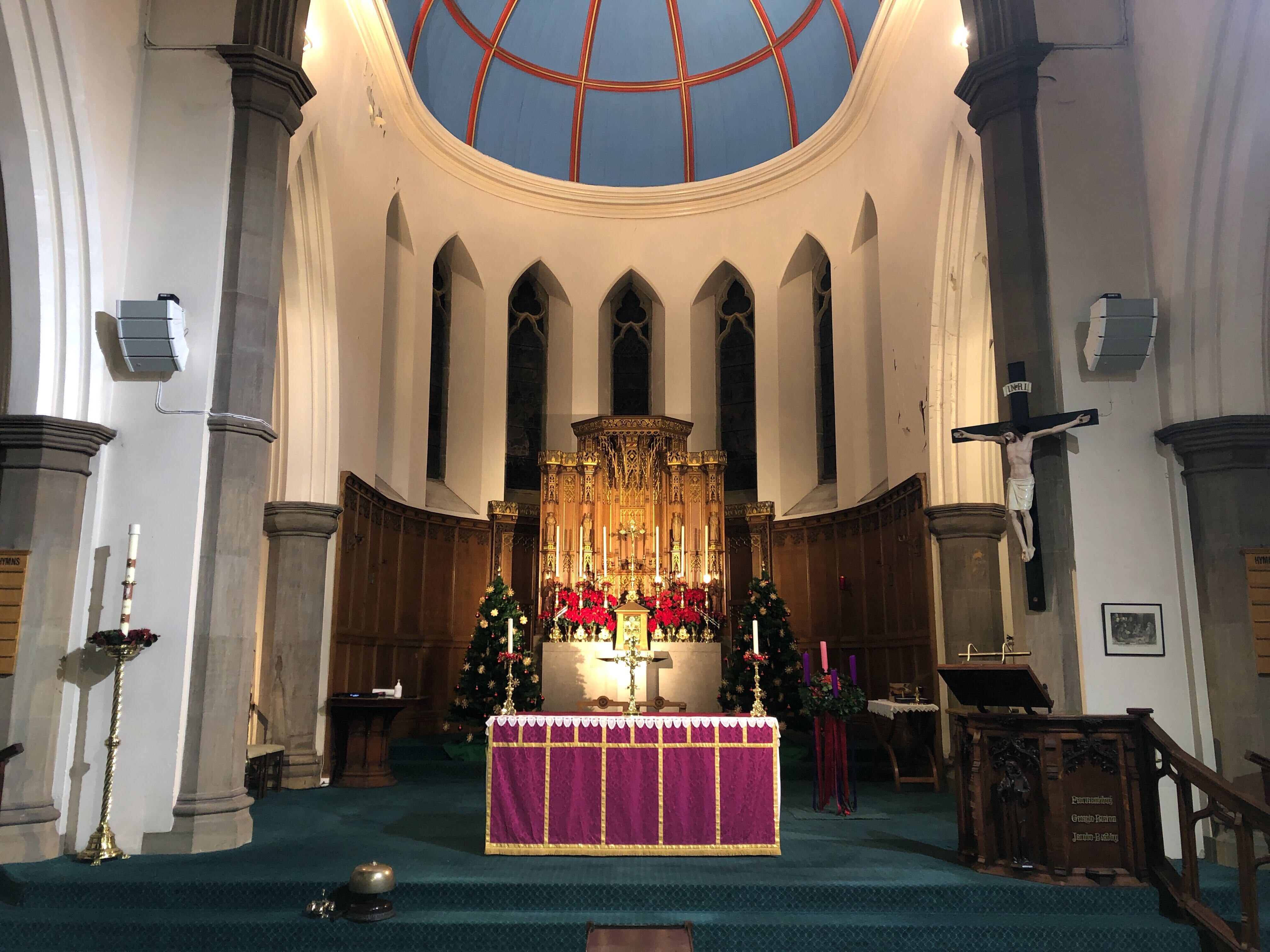Sound Solutions for Churches with Blaydon Communications

Project: St Bede’s South Tyneside
Installer: Blaydon Communications Ltd
Our recent TOA Academy Course featured how to find solutions for Churches, so we took this opportunity to speak to Paul Dougherty, Managing Director of Blaydon Communications, about the solutions he finds for these installations and what challenges this style of building presents. We look at how specifying speakers, that can direct sound more effectively, can provide the solution and the thought process behind the design that can help reduce the amount of product whilst ensuring greater sound quality.
We know, from the number of technical calls we get directly from churches, that systems are mostly operated by volunteers from the congregation and have often been installed for many years – a plus point which shows the robustness of TOA products but there always comes a point when a system needs an upgrade. It is common that these old systems do not meet the demands of the current sound needs of the building as they did when they were installed. Like all organisations, churches want to move with the times and their music provision has changed involving bands, singers, and multi-instrument groups rather than traditional organ/choirs or a mix of both which needs a greater thought process when delivering good quality sound.
Getting expert advice on the best and most effective products for the size and shape of their building is very important especially with limited technical knowledge. If you think that many churches were built before electronics were even invented and are designed acoustically to enable sound to travel without amplification. This gives them their own unique issues when you try to add modern technology into the mix.
So, let’s think about the structure and how that affects sound. Most churches are designed in the shape of a cross with a central aisle, the nave, flanked by two aisles. This coupled with high ceilings and large amounts of stone in the form of archways and flagged floors causes sound to reflect, and smaller congregations, since covid, mean there is less natural absorption.
When asking installation experts for help with system design we must consider what the current needs are but also take into account what the system could potentially be used for in the future to give the best possible and long-term solution.
One such project that Paul’s team at Blaydon Communications were asked to provide a solution for was St Bede’s in South Tyneside. They were approached, during lockdown, by the PCC of St Bede’s to look at a new system to improve all the elements we have addressed above.
As Paul explains “The originally system had a lot of speakers but no thought process as to how to get the sound direction correct with better quality. We looked at the best option for minimising the number of speakers whilst looking at installation points to ensure excellent sound quality. Using TOA’s HX-5 variable array speakers we were able to reduce the speaker numbers to just two which we then aligned on the front of the sanctuary ensuring that any microphones were located behind them to minimise feedback. Mounting the speakers in line with each other ensures all the sound moves in the same direction at the same time which improves the intelligibility of sound whilst minimising any reflection.”
The. HX-5 is particularly suited to Houses of Worship. Its innovative modular design incorporates the best characteristics of a traditional subwoofer enclosure with a CD horn-loaded high frequency driver and full range compact speaker without the drawbacks associated with each type. Configured with 4 stacking speaker modules it allows for variable directivity control using the 4 angles 15,30, 45 and 60 degrees that can be employed as needed.
As Paul explains “We were also able to upgrade the amplifier as part of the project and this not only gave sufficient power to the HX-5 speakers but had additional inputs to enable us to add a new media player allowing broadcast music via CD, USB, aux input or Bluetooth. The system is also very easy to operate and therefore ideal for multi non-technical users and, of course, the team at Blaydon Communications are always on hand should an issue arise”
“The feedback from St Bede’s was that the new system provided superb sound to almost every of the building. Our engineers did pay a return visit to make a slight adjustment to the dispersion angles of the loudspeakers following feedback from the congregation and they now have the perfect balanced sound from the front to the back of the building. Whilst on-site we also found time to test the system for intelligibility and were delighted that we were able to report that the results were more accustomed to that of a carpeted room than the echoey reflected sound the church had with the old system.
To read more about the HX-5 and to download the technical specifications; Click Here
To download a copy of this article click Here